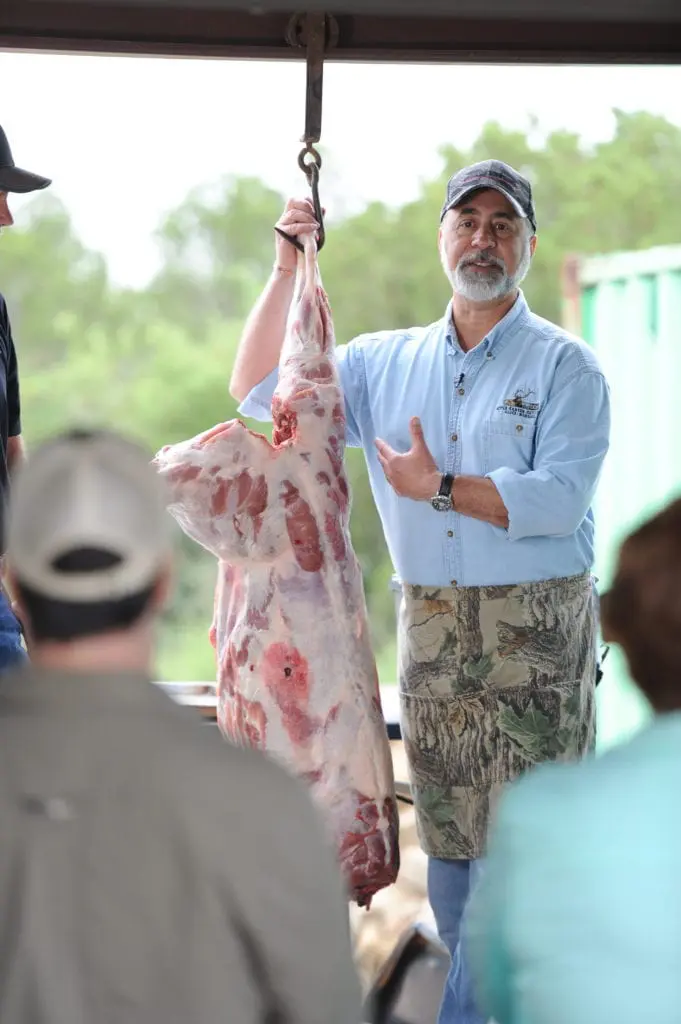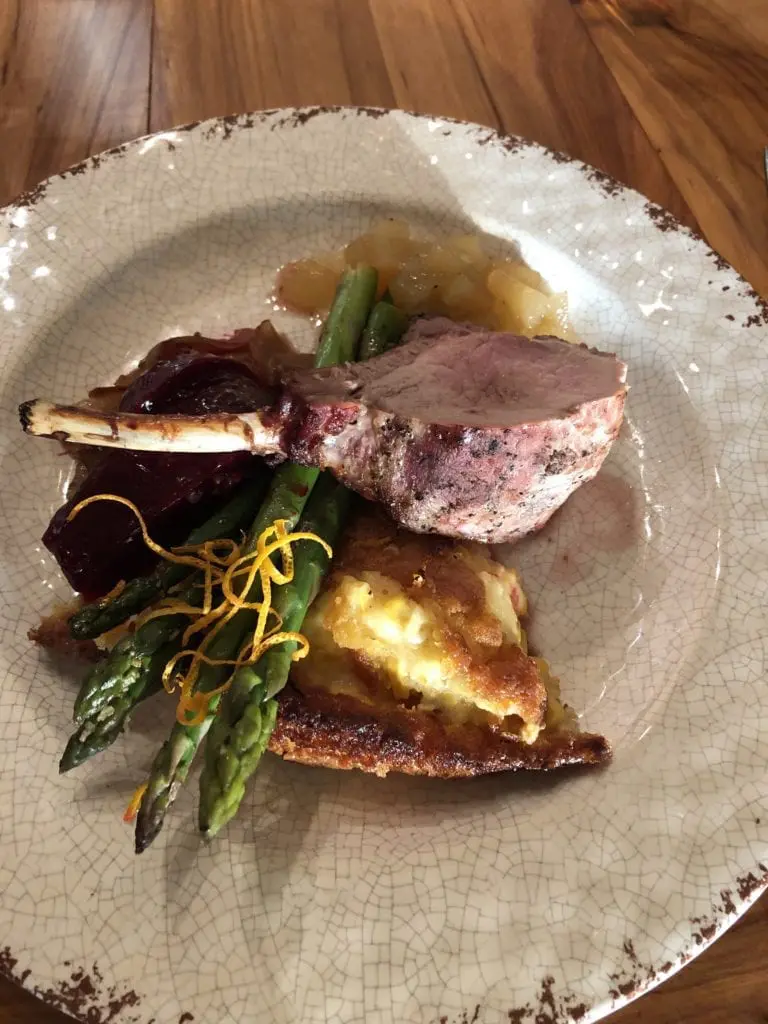Weekend workshop teaches true hunting and cooking
Story by Lili Sams, Lone Star Outdoor News
The trend of field to table is sweeping the country and doesn’t seem to be slowing down. Eager to refine their wild game cooking skills, six students from all over the country arrived at the T Diamond Lodge near Aspermont for a hands-on experience.
In the not-so-average cooking class, the participants would harvest a wild hog to use as the main event for the meal they would learn how to prepare. The cooking school, hosted by Outdoor Solutions Corp., was all-inclusive with the long-range rifle practice, hog hunting, preparation and final dinner service.
On the first day, the group went over gun safety during a long-range rifle training session. They shot targets up to 1,000 yards with the popular 6.5 Creedmore rifle cartridge to build confidence for the evening hunt.
Most of the students had experience shooting rifles and several of the students were successful that evening. One group had to drag a hog 200 yards from the middle of a muddy, wet wheat field.
Debbie Scott traveled for the class from Iowa. She has hunted in Africa four times and harvested her first hog on the last day of the workshop.

The T Diamond Lodge sits on top of a hill that overlooks 40,000 acres of hunting land in Stonewall County. The group gathered on the porch to watch the sunset while they enjoyed cocktails and the usual camp talk.
After a quick morning hunt, Chef Albert Wutsch began his instruction with the basics of how to properly quarter, debone and butcher a hog.
Wutsch got interested in cooking from his time as a Boy Scout and started cooking when he was 15. He studied wildlife management in college.
“I love the outdoors and was trying to figure out if I was going to be an outfitter or a chef.”
The chef combined his passion for the outdoors and cooking. He worked at numerous restaurants and has published several cookbooks.
Wutsch didn’t forget any of the details. He explained how to properly cut around the muscles and remove the sinew tissue. Each student worked on their hog, cutting and then vacuum-packing the meat.

The students experience in the kitchen varied. Before the instruction began, Andy Coonrod, of Houston said the only thing he knew how to cook was macaroni and cheese.
Rafael Carrillo was familiar with the kitchen. He has been cooking since he was a teenager and has taken culinary classes.
“My biggest takeaway from the weekend adventure was wild boar is very good to eat, very lean and no gamey taste,” Carrillo said.
The students were broken into smaller groups, each given a recipe for a course that they would prepare for the final meal.
The robust menu consisted of wild boar carpaccio, stirfry boar with a sweet Thai chili glaze, braised boar with caraway, kraut and white wine, rack of boar with apple gastrique and amaretto poached pears for dessert. Each course was paired with a complementary wine from Horn Winery.
Wutsch, with the help of two assistants, instructed the groups. The kitchen began to buzz with the sounds of the knives chopping, bowls clanging and meat sizzling.
“I wanted the students to really understand the methods,”Wutsch said. All selected recipes were interchangeable and universal: so, instead of pheasant as the meat in the stir-fry, the students used a similar tender cut of the boar.

The smell of the boar ribs on the grill wafted throughout the kitchen. The energy was exciting and the students were eager to perfect their skills. The students started plating the dishes they served to the other guests at the lodge.
The courses were brought out and presented to the guests. There was a sense of pride for each dish the students showcased, almost like they were TV personalities on the Food Network.
One of the guests made a comment to Andy Coonrod: “This morning all you said you could make was mac n cheese, now you are a professional chef.”
The room filled with laughter and applause.
It was unanimous around the table, the meal was a major success.
“Do I have permission to lick the bowl?” one guest asked. At the end of the dinner, there were no leftovers to be found on any of the plates.
As the students packed up the next morning, they looked back on what they had accomplished.
“The key to the event was we were able to put into practice what we learned immediately—shooting instruction followed by hunting sessions, and then butchering instruction followed by cooking the game,” said Bill MacGregor, who attended the event from New York.


